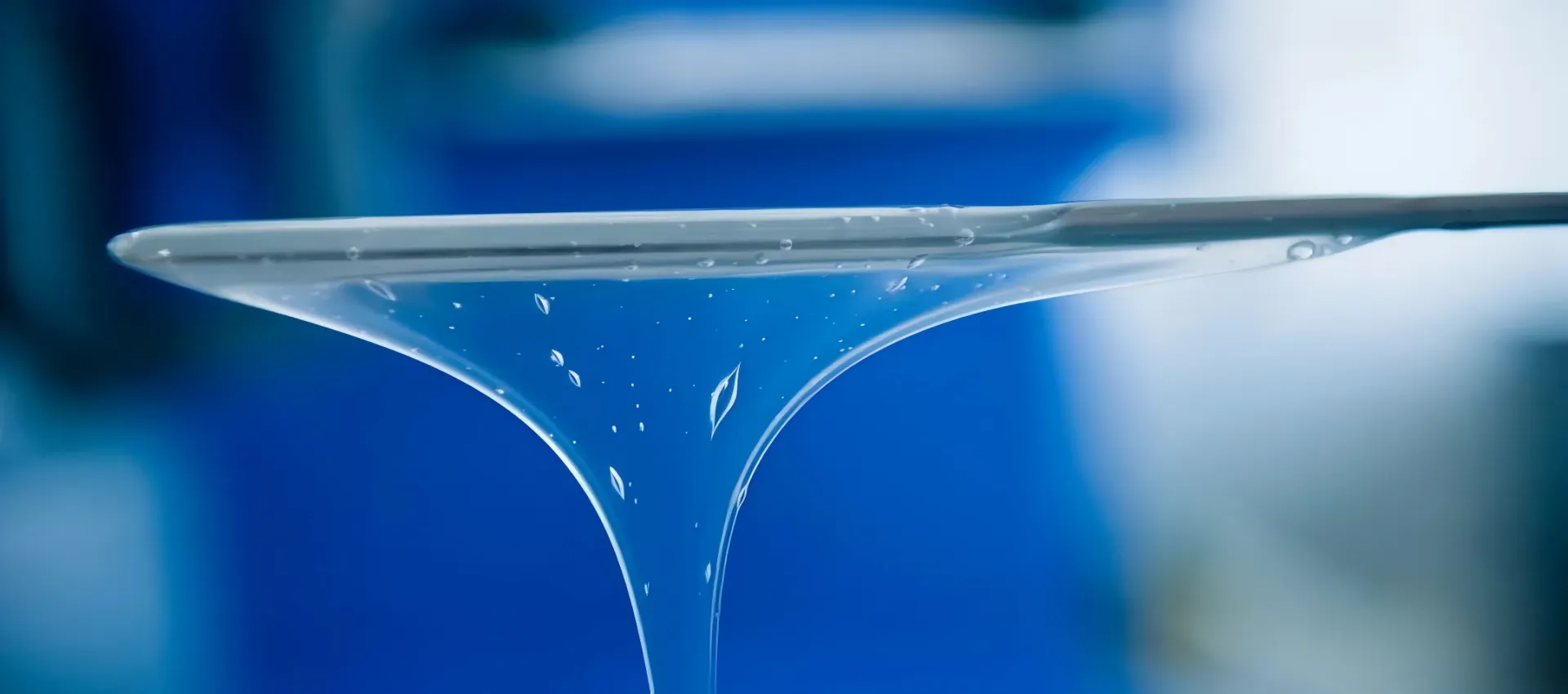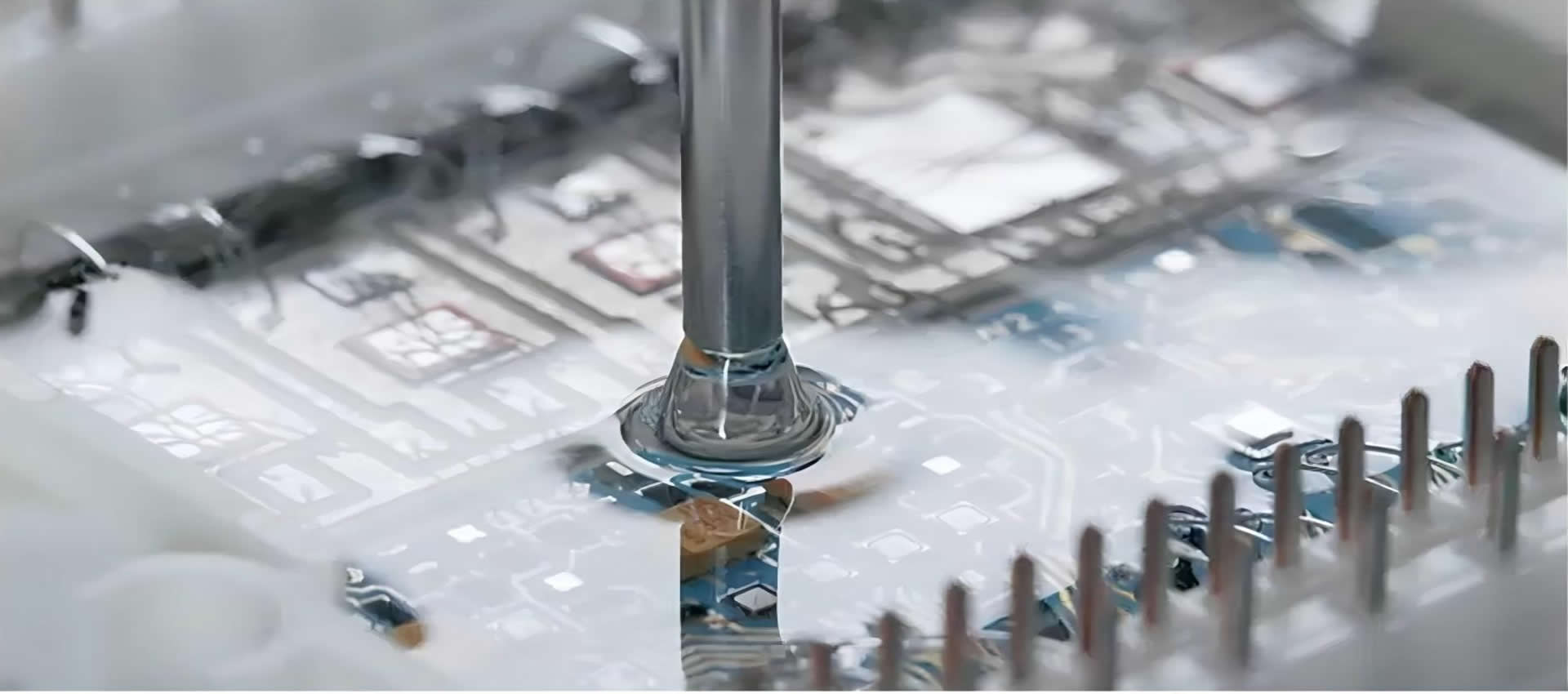
Vinyl Terminated Silicone Fluid factory

Vinyl Terminated Silicone Fluid
Everything you need to know about our products and company
Vinyl terminated fluid is emerging as a transformative additive in textile and leather manufacturing, offering a unique combination of processing enhancement and performance optimization. This reactive silicone fluid leverages its terminal vinyl groups to create durable molecular bridges with fibers and leather substrates, delivering lasting functional benefits while maintaining material integrity.
With typical dosage levels of 0.3-0.8%, vinyl silicone oil demonstrates remarkable cost-effectiveness while meeting rigorous industry standards including OEKO-TEX and REACH certifications. Its thermal stability up to 200°C ensures consistent performance across various processing conditions, from high-temperature dyeing to finishing operations. By delivering multifunctional benefits through a single additive solution, vinyl silicone oil enables manufacturers to streamline their production processes while achieving superior end-product quality that meets evolving market demands for sustainable and high-performance materials.
Basic Product Information
TYPICAL PROPERTIES
| Appearance | Colorless Transparent Liquid |
| Viscosity (25℃),mm2/s | 70-110000 |
| Vinylcontent % | 0.06-1.08 |
| Volatile content (150℃,3h),% | ≤1.5 |

Physical Properties
Chemical Properties
Product Functions
Penetrates fiber interiors to reduce inter-fiber friction, creating smooth, soft, and elastic fabrics for superior comfort.
Increases crease recovery angle by 20–30%, maintaining garment flatness.
Forms a low-surface-energy protective film on fabric surfaces, achieving ≥110° contact angle for water/oil.
Passes ISO 4920 spray test (80+ rating), blocking stain penetration.
Boosts fiber flexibility and recovery, reducing wrinkles by 30–50% (AATCC 128).
Maintains >150° crease recovery angle (vs. untreated fabrics: 90–120°).
Improves dye dispersion uniformity (ΔE <1.5 after washing) and color fastness (4–5 grade per ISO 105-C06).
Enhances dye-fiber bonding strength, reducing fading by ≥40%.
Fills fiber gaps, increasing tensile strength by 15–25% (ASTM D5034) and abrasion resistance (Martindale ≥20,000 cycles).
Penetrates leather fibers to reduce stiffness, improving softness by 30% (ISO 17235) and fullness (thickness increase: 0.1–0.3 mm).
Creates a waterproof yet breathable membrane (>10,000 mm H₂O hydrostatic pressure, ISO 811) without compromising breathability (MVTR >5,000 g/m²/24h).
Enhances coating adhesion (cross-cut test: Grade 0) and leveling for gloss ≥80 GU (60° gloss meter).
Participates in fiber crosslinking, improving weather resistance (QUV 1000h ΔE <2.0) and chemical resistance (10% HCl/NaOH, 48h).
Applications
Textile Industry
Leather Industry
Bridges gaps in softness and breathability vs. natural leather, expanding applications for synthetic leather products to meet diverse market demands.
Core Advantages
| Advantages | Technical Parameters | Industry Value |
| Superior Softening Effect | 30–50% reduction in fabric bending rigidity (KES-F testing system) | Enhances textile softness for superior comfort; improves leather tactile delicacy and quality. |
| Water/Oil Repellency | Water contact angle: 120°–140° Oil contact angle: 80°–100° (ASTM D724) | Protects fabrics/leather from water/oil contamination, improving durability and cleanability for outdoor apparel or luxury leather goods. |
| Outstanding Wrinkle Resistance | 20–40° increase in crease recovery angle (GB/T 3819) | Reduces wrinkles during use/washing, maintaining garment aesthetics and lowering maintenance costs. |
| Enhanced Dyeing Performance | 20–30% improvement in dye uniformity (spectrophotometry) 1–2-grade color fastness boost (GB/T 3921) | Achieves vivid, uniform colors for higher market appeal and reduced environmental impact from dye fading. |
| Leather Finishing Optimization | 20–40% gloss increase (gloss meter) Coating adhesion: Grade 0 (GB/T 9286) | Delivers smoother, high-gloss leather surfaces for premium aesthetics and added product value. |
Market Value
Market Drivers
Luxury leather (e.g., car seats, designer handbags) and functional textiles (e.g., sportswear, medical PPE) drive demand for high-performance silicones.
Market Size & Growth Trends
Future Trends & Challenges
Conclusion
Customized, eco-friendly, high-performance formulations will dominate.
Chinese firms mastering high-end production tech (e.g., UV-curable grades) could capture 15–20% global market share by 2030.
Experimental Data & Case Studies
Experimental Data
| Test Item | Test Standard | Result | Conventional Product Comparison |
| Softness | AATCC 202 | 50% improvement | 20–30% improvement |
| Dry Rubbing Color Fastness | ISO 105-X12 | Grade 4–5 | Grade 3–4 |
| Water Repellency | AATCC 22 | Initial rating: 90 points | Initial rating: 70 points |
| Wash Resistance | ISO 6330 | 85% retention after 30 washes | 60% retention after 30 washes |
Case Studies
Preparation Process, Core Technologies & Precautions
Preparation Process
Main Monomers:
Octamethylcyclotetrasiloxane (D4) or D4/D5 blends – Provide the polydimethylsiloxane (PDMS) backbone.
Vinyl End-Capper: Tetramethyldivinyldisiloxane (Vi-MVi) to introduce terminal vinyl groups.
Side-Chain Vinyl Monomers (optional): Methylvinylcyclosiloxanes (ViD3/ViD4) for additional crosslinking sites.
Catalysts:
Alkaline Catalysis (Mainstream): Tetramethylammonium hydroxide (TMAH) for narrow molecular weight distribution (PDI <1.2).
Acidic Catalysis (Cost-Effective): Sulfuric acid or solid acids, but requires post-reaction purification.
Mechanism:
D4/D5 undergo ring-opening polymerization under catalysis, reacting with Vi-MVi to form vinyl-terminated PDMS.
Process Parameters:
Temperature: 80–120°C (alkaline) or ambient–60°C (acidic).
Time: 2–6 hours (depending on target molecular weight).
Vacuum Dehydration: Removes low-boiling byproducts (e.g., water, cyclic siloxanes).
Neutralization:
Alkaline catalysts neutralized with phosphoric acid or CO₂; acidic catalysts with sodium carbonate.
Thermal Decomposition:
TMAH decomposes into trimethylamine and methanol at 180°C under vacuum.
Filtration/Adsorption:
Remove residual metal ions using activated carbon or molecular sieves (critical for high-end applications).
Low MW (500–5,000 cSt): Higher Vi-MVi ratios for lightweight fabric finishing.
High MW (10,000–50,000 cSt): Reduced end-capper for leather coatings (superior film-forming).
Core Technologies
The textile and leather industries predominantly use aqueous emulsions to reduce VOCs. Preparation methods include:
Phase Inversion Emulsification:
Vinyl silicone oil + emulsifiers (e.g., Span-80/Tween-80) → gradual water addition for phase inversion → homogenized emulsification (particle size <100 nm).
Microemulsification:
High-HLB emulsifiers (e.g., AEO-9) + cosolvents (e.g., isopropyl alcohol) → transparent microemulsion (enhanced stability).
Platinum-Catalyzed Addition:
Vinyl silicone oil + hydrogen-containing silicone oil (Si-H) → Si-CH₂-CH₂-Si crosslinked network (excellent wash resistance).
Peroxide Vulcanization:
Used for thick-coated leather (e.g., automotive seats) to improve heat resistance.
Special Process Requirements for Textile and Leather Applications
Padding Method:
Dilute emulsion → pad fabric → dry (120–150°C) → cure (160–180°C, promotes crosslinking).
Foam Finishing:
Low-liquor process to save chemicals (ideal for knitted fabrics).
Base Layer Treatment:
Vinyl silicone oil + polyurethane blend → enhances leather softness.
Top Gloss Layer:
High vinyl-content silicone oil (1.0%–1.5%) + nano-SiO₂ → improves abrasion resistance.
Precautions
Packaging & Ordering
Packaging: 200kg/1000kg plastic drums (customizable).
Our most popular products loved by customers worldwide
Vinyl termified silicone fluids represent a specialized class of medical-grade materials engineered for advanced healthcare applications. These reactive fluids feature terminal vinyl groups that enable precise molecular customization and controlled crosslinking capabilities, making them ideal for developing implantable devices, drug delivery systems, and d.
Vinyl silicone fluid is revolutionizing cosmetic and personal care formulations through its unique reactive properties and sensory enhancement capabilities. This functional silicone material features terminal vinyl groups that enable customizable cross-linking while maintaining the characteristic smoothness of silicone-based ingredients. Vinyl sili.
Vinyl silicone fluid, as a core functional silicone product, demonstrates exceptional versatility and reliability in the industrial additives sector. Its unique molecular structure combines the flexibility of a siloxane backbone with the reactivity of terminal vinyl groups, delivering customized solutions for various industrial applications. In polymer .
Vinyl terminated fluid is emerging as a transformative additive in textile and leather manufacturing, offering a unique combination of processing enhancement and performance optimization. This reactive silicone fluid leverages its terminal vinyl groups to create durable molecular bridges with fibers and leather substrates, delivering lasting functional ben.